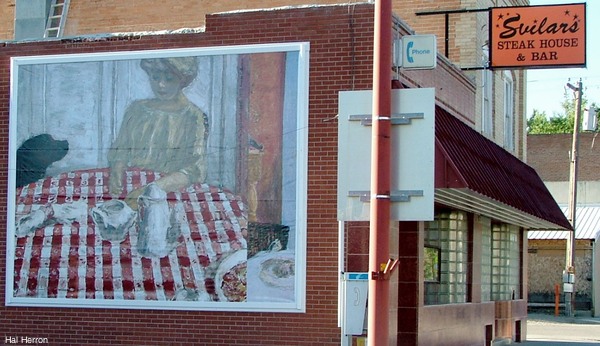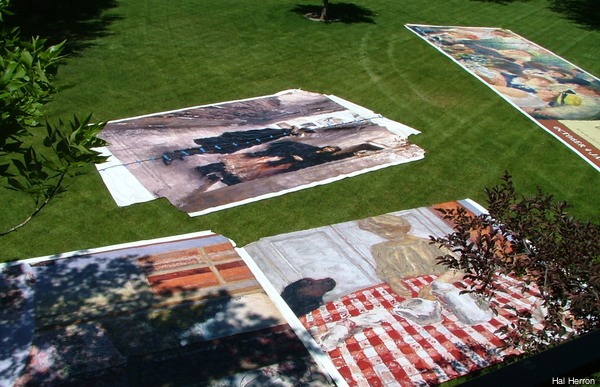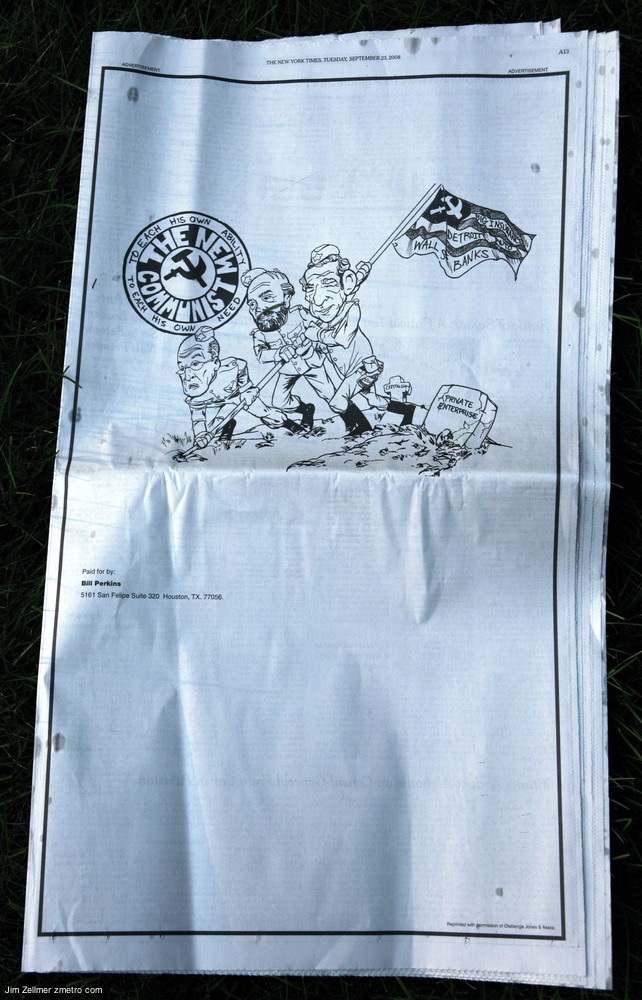From Paulson to You | 11:41 a.m. In response to a question, Secretary Paulson sought to clear the air about who the bailout was supposed to help. “This is all about the American taxpayer,” he said. “That’s all we care about.” He continued:
Any banking operation in the United states that is doing business with the American public is important. The American public in dealing with the financial system doesn’t know who owns that bank.
Later, he added, “You ask me about taxpayers being on the hook? Guess what, they are already on the hook.”
Garden Sunrise
 Posted in Agriculture, Gardening, Photography.
Posted in Agriculture, Gardening, Photography.
The Power of One
A few years ago, I had an opportunity to hear “her deepness” Sylvia Earle speak. She included this short video in her presentation – “the Power of One“.
Earle emphasized the opportunities we all have to change the world. I recalled her talk while visiting with Hal Herron recently. Herron, of Riverton, Wyoming has been adding outdoor art to his home town in an interesting way.
Museums often create large banners to promote an exhibit. Herron sought out these banners after a showing is complete. He pays for shipping to Riverton and places them around the community for all to enjoy. Fascinating. He forwarded two photos, seen below:

Bill Perkin’s full page New York Times ad in today’s paper is another illustration of the “Power of One”. 
Perkins approach requires a certain size checkbook, of course 🙂
All of which reminds me of the “two greatest commandments”.
“The Era of Leverage is Over”
A few years ago, senior officials at the Bank for International Settlements started ringing alarm bells about the scale of leverage that was quietly building up in the financial system. Back then, though, it was fantastically hard to get American policymakers – let alone bankers – to listen.
In the go-go days of the credit bubble, Washington policymakers blithely assumed that the Western financial system had plenty of capital to cope with any potential risks. Consequently, as one former BIS official admits: “Worrying about leverage wasn’t fashionable at all – no one wanted to hear.”
Fast-forward a couple of years and, my, how those Western financiers are having to eat humble pie (even to the point of accepting a helping hand from the once-ailing Japanese). After all, the events of the past year have now made it patently – horrifically – obvious that the Western banking system has become dangerously undercapitalised in recent years, to the point where even the Federal Reserve is having to shore up its defences.
Moreover, it is now also clear that Western policymakers are belatedly trying to correct this state of affairs. The days when high leverage, mega bonuses and wacky instruments were equated with financial virility have gone; instead a more humble, back-to-basics and slim-line approach is what investors are demanding. Thus, deleveraging is now all the rage – in whatever form it might take.
Five Reasons to Give Thanks for the Financial Collapse of the Decade
One of life’s rules is that there’s bad in good and good in bad. The total collapse of the U.S. financial system is no exception. Even in the midst of the current financial despair we can look around and identify many collateral benefits.
A lot of attractive office space seems to be opening up in midtown Manhattan, for instance, and the U.S. government is now getting paid to borrow money. (And with T-bills yielding 0 percent, they really ought to borrow a lot more of it, and quickly.)
And so as Morgan Stanley Chief Executive Officer John Mack blasts short sellers for his problems, and Goldman Sachs CEO Lloyd Blankfein swans around pretending to be above this little panic, we ought to step back and enjoy the positives.
Sunrise: Madison’s Lake Wingra
Choc au Vin
he discovery that red wine is good for you has helped the tipple become more popular around Asia. And that has led to some interesting new brand extensions. Contributor Nicholas Frisch discovered Pejoy, a Japanese confection mixing wine and chocolate, in a Taiwanese Seven-Eleven.
Yankee Stadium VR Scene
Thanks to Pete for emailing Vincent LaForet’s very nice scene, not that I’m a Yankee fan.
A Fascinating Look At Iraq
At first, I didn’t recognize the place.
On Karada Mariam, a street that runs over the Tigris River toward the Green Zone, the Serwan and the Zamboor, two kebab places blown up by suicide bombers in 2006, were crammed with customers. Farther up the street was Pizza Napoli, the Italian place shut down in 2006; it, too, was open for business. And I’d forgotten altogether about Abu Nashwan’s Wine Shop, boarded up when the black-suited militiamen of the Mahdi Army had threatened to kill its owners. There it was, flung open to the world.
Two years ago, when I last stayed in Baghdad, Karada Mariam was like the whole of the city: shuttered, shattered, broken and dead.
Abu Nawas Park — I didn’t recognize that, either. By the time I had left the country in August 2006, the two-mile stretch of riverside park was a grim, spooky, deserted place, a symbol for the dying city that Baghdad had become.
Filkins is the author of: “The Forever War”.
Madison Farmer’s Market Flowers

